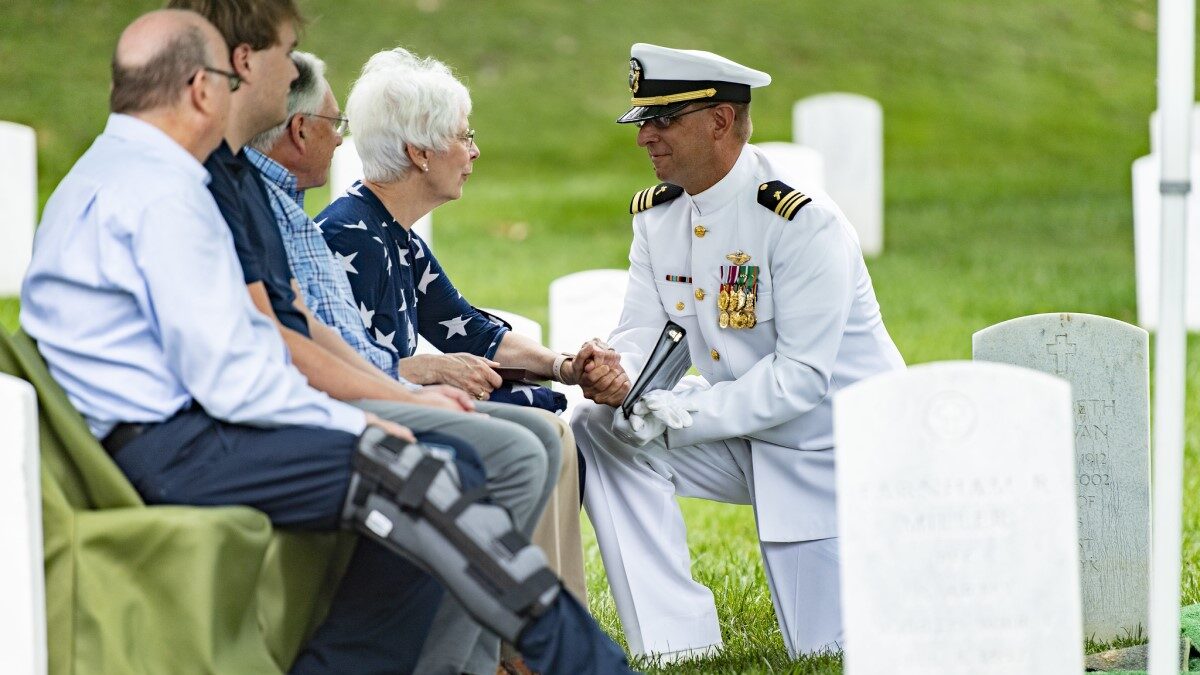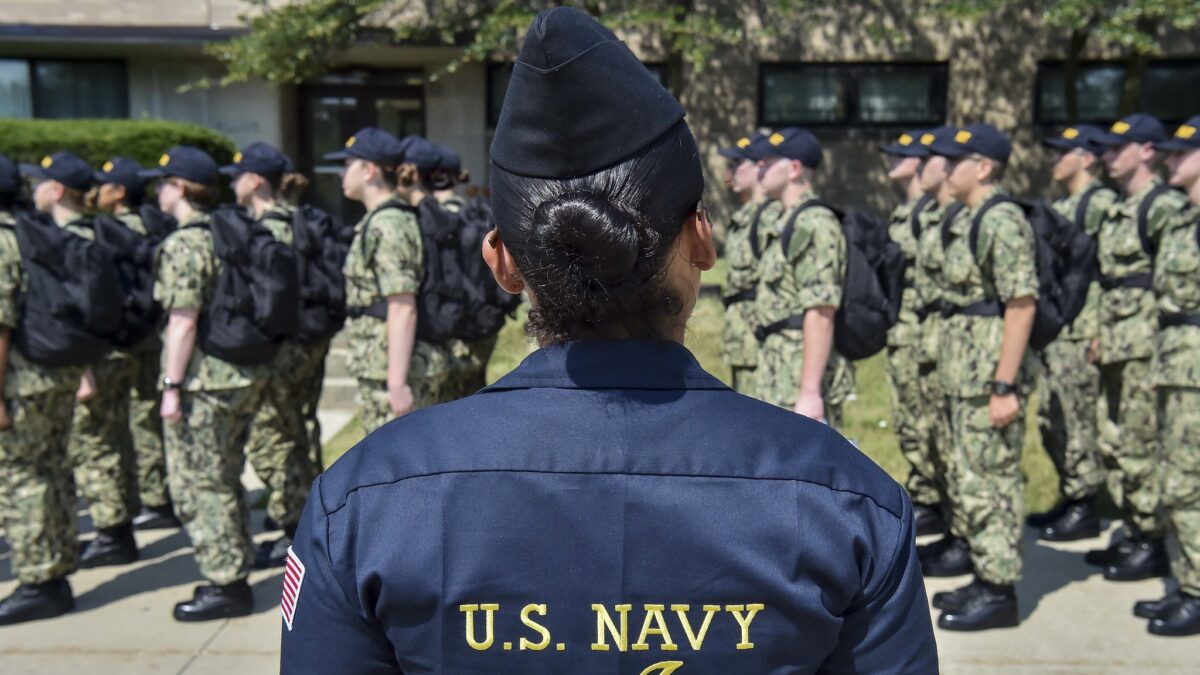
Transgender people can now openly serve in all branches of the U.S. military, spokesmen announced last Thursday. This shift fundamentally changes past American policies about our military, including that military health care will now cover transgender services. These services include counseling, opposite-sex hormones, and, with doctor approval, sexual-reassignment surgery.
In short, troops can declare war on their birth sex, courtesy of U.S. taxpayers. Meanwhile, Congress has tripled Veterans Affairs funding since the late 1990s, which didn’t stop a reported 1,000 veterans from dying due to an inept system that can’t get them basic lifesaving medical care on time, a story that broke back in 2014 and has yet to result in substantive upgrades to the military health-care system.
“Defense Secretary Ashton Carter announced the new policy after a year of contentious debate inside the Pentagon as some senior military leaders questioned the impact on readiness,” says an article in Military Times. “Carter firmly rejected those readiness concerns and said the change will ultimately improve the quality of the force. ‘The policies we’re issuing today will allow us to access talent of transgender service members to strengthen accomplishment of our mission,’ Carter said at a Pentagon press briefing. ‘We have to have access to 100 percent of America’s population for our all-volunteer force to be able to recruit from among them the most highly qualified — and to retain them,’ Carter said.”
Social Engineering at Cost of Military Excellence
While around 7.3 percent of the U.S. population has either served or is currently serving in the military, one survey whose respondents were found through transgender advocacy groups puts the percent of transgender service members closer to 20 percent. That suggests that out of the relatively small percentage of the U.S. population that is estimated to be transgender—0.3 percent—20 percent of them (or 0.06 percent of the total U.S. population) have served or are currently serving in our military, all despite the previous policy of essentially don’t ask, don’t tell. This is a major policy change to accommodate a tiny segment of our population.
From the time of the announcement, senior military officials were given 90 days to write policies on how to transition trans soldiers into being able to live and serve openly with their identified sex. By this time in 2017, trans recruits will be able to enlist or be commissioned into the officer corps. To qualify, recruits will need to have continuously identified as transgender for a year and a half before enlisting.
Right now, there are more questions than answers. How will this shift the dynamics among our troops, who have to live and work so closely together? How will this affect military chaplains’ ability to preach to and counsel troops? How will military doctors and counselors feel about these changes? It’s important to note that for a change so large and sweeping, no polls were conducted on what those currently serving in the military think about serving with openly trans soldiers.
Contrary to their commanding officers, many of whom have never seen active duty under combat conditions, rank-and-file military members report they are not excited for what these changes will do to combat readliness and troop morale, as two wrote Rod Dreher:
…now I have to deal with the idea that not only will I have to lead sailors who are mentally ill (according to the DSM)…but will be reprimanded, ranked lower, and lose all chances of promotion (and maybe be thrown out before the golden retirement) if I don’t play into their fantasy that they aren’t the gender their genitalia and chromosomes clearly dictate….integrating less than 1/10th of 1% of the population into the military, and all the costs of training and time associated with this (berthing, medical, training videos and presentations, logistics, lost work days) is more important than spending the money necessary to adequately supply the fleet with parts and supplies to meet readiness needs.
Another wrote, “This modern military would not have survived one month during World War Two. Camaraderie is dead, except for the bastions of the Special Forces… I was hoping to honorably serve our nation for 20 years plus. But in this era of rampant political correctness, I could not fulfill this objective. The social engineers are out to completely emasculate the mighty Armed Forces of the United States. Overall, these radical ideologues have been successful. In terms of the Navy, the final objective of their demented social plans is to dismantle the strength of the U.S. Navy Seals, the last bastion of of [sic] traditional camaraderie and masculinity within the Fleet.”
One More Thing Degrading Military Strength
Complicating carrying out this directive, there is no definitive list of what “medically necessary” means for treatment for trans people, let alone for trans service members. Current policies on breast implants are already muddy and unclear, with most people finding they’re not routinely covered. Facial surgeries are even less easy to find information on because before this change it was only an issue for dependents. There is no firm way to forecast what this will cost the VA, do to wait times, and how it will affect the general defense budget that is already looking to trim costs in health care and elsewhere, especially long term.
We can ask what this means for physical fitness (PT) standards, for the expected appearance and uniformity of troops, and for basic needs like housing. These answers aren’t released yet, but we do know that PT standards for men and women are different, with low scores for men being high scores for women.
While the civilian world battles over issues such as bathroom and locker room access, the military population faces situations, especially during deployments, that require far closer quarters than merely working together. Attempting to accommodate these needs for people who are together 24/7 is different than trying to accommodate people who want to shower or use a restroom based on feelings, but otherwise are able to go about their day without special consideration.
Proponents of this policy change are hailing it as a step toward ending the differences between LGBTQ people and the rest of society. Ideas on gender and sexuality have radically shifted in the last two decades, and for LGBTQ activists this is the next logical step. Tearing down the lines and barriers that separate men from women in all professions includes questioning what it even means to be a man or a woman, or what it means to identify as neither.
No longer are only women mothers. No longer are only men fathers. Soldiers can be men, they can be women, they can be men born as women and women born as men. If these sentences are confusing, it’s because most of us have always trusted that these things were concrete, unchanging, and intrinsic to the basic fabric of what makes us people.









